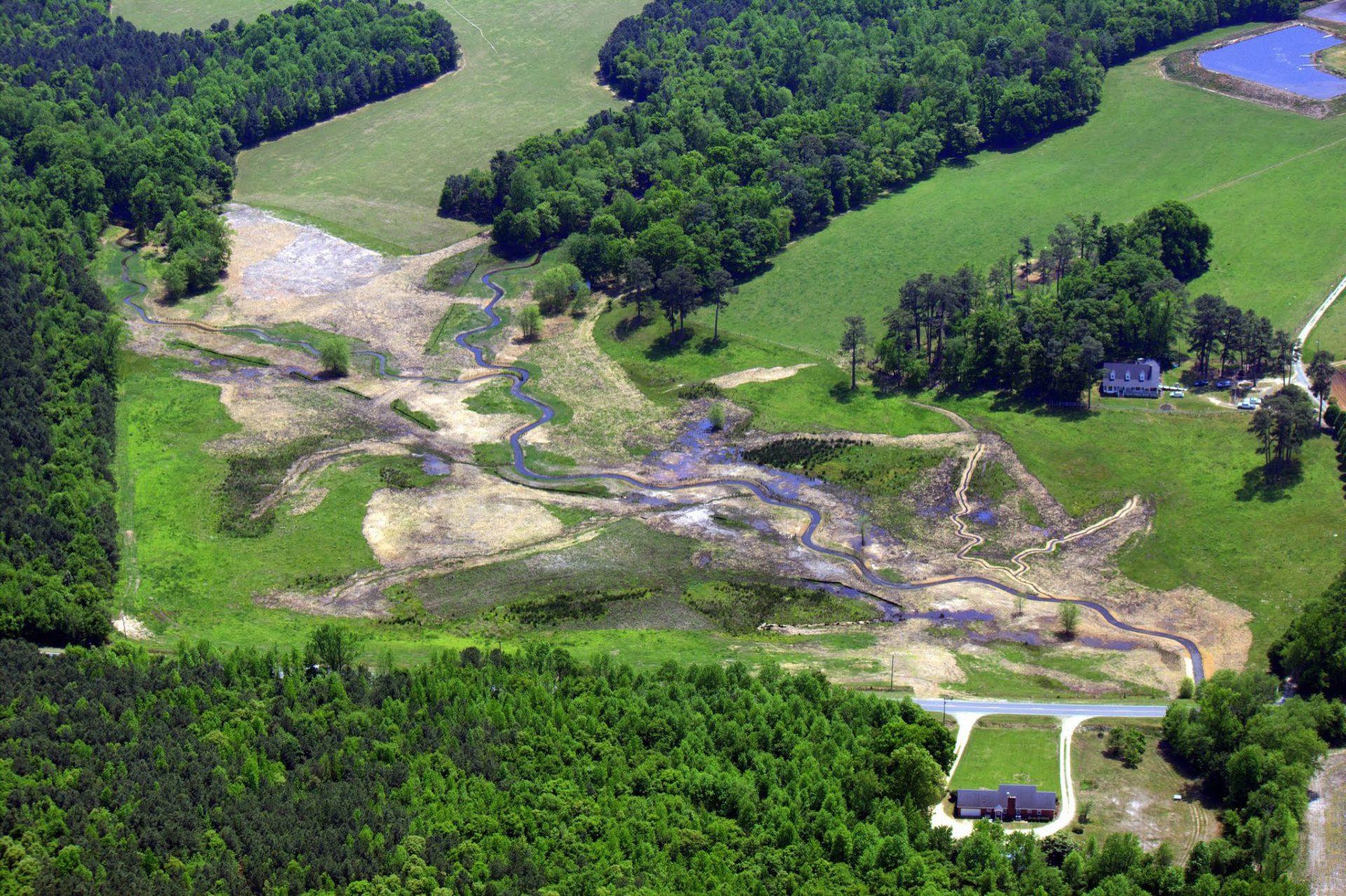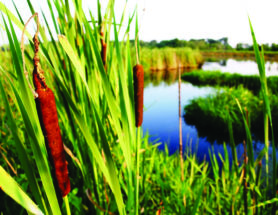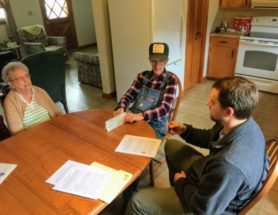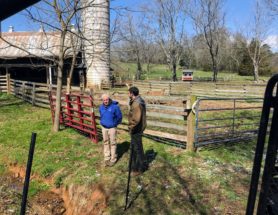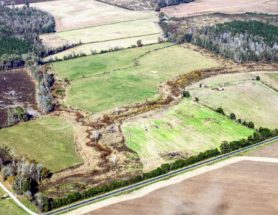Has a stream, wetland or riparian buffer restoration opportunity been identified on your property? If so, Restoration Systems would like to give you a clear explanation of the opportunity and the process.
Environmental restoration, often called “mitigation,” restores streams and wetlands to their historical condition and location. Working hand in hand with the landowner, RS restores degraded streams and wetlands in a manner that will accomodate a landowner’s current and future land use. To accomplish the restoration and meet standards for environmental improvement, RS will fill ditches and canals to restore drained wetlands, re-contour and stabilize stream banks, and replant the area with native hardwood trees and natural grasses. We perform the work while ensuring your property remains profitable and productive.
Unlike most water quality programs and best management practices, RS compensates a landowner with a per-acre payment. The compensation is to allow RS to conduct the work and place a permanent conservation easement over the restored land. Given our work is permanent, the per-acre compensation typically exceeds the appraised value of the land. In addition to the per-acre compensation, RS will often install and improve farm infrastructure while completing our work. These improvements could include new fencing, cattle watering stations, improved farm roads, and new crossings over streams, to name just a few.

